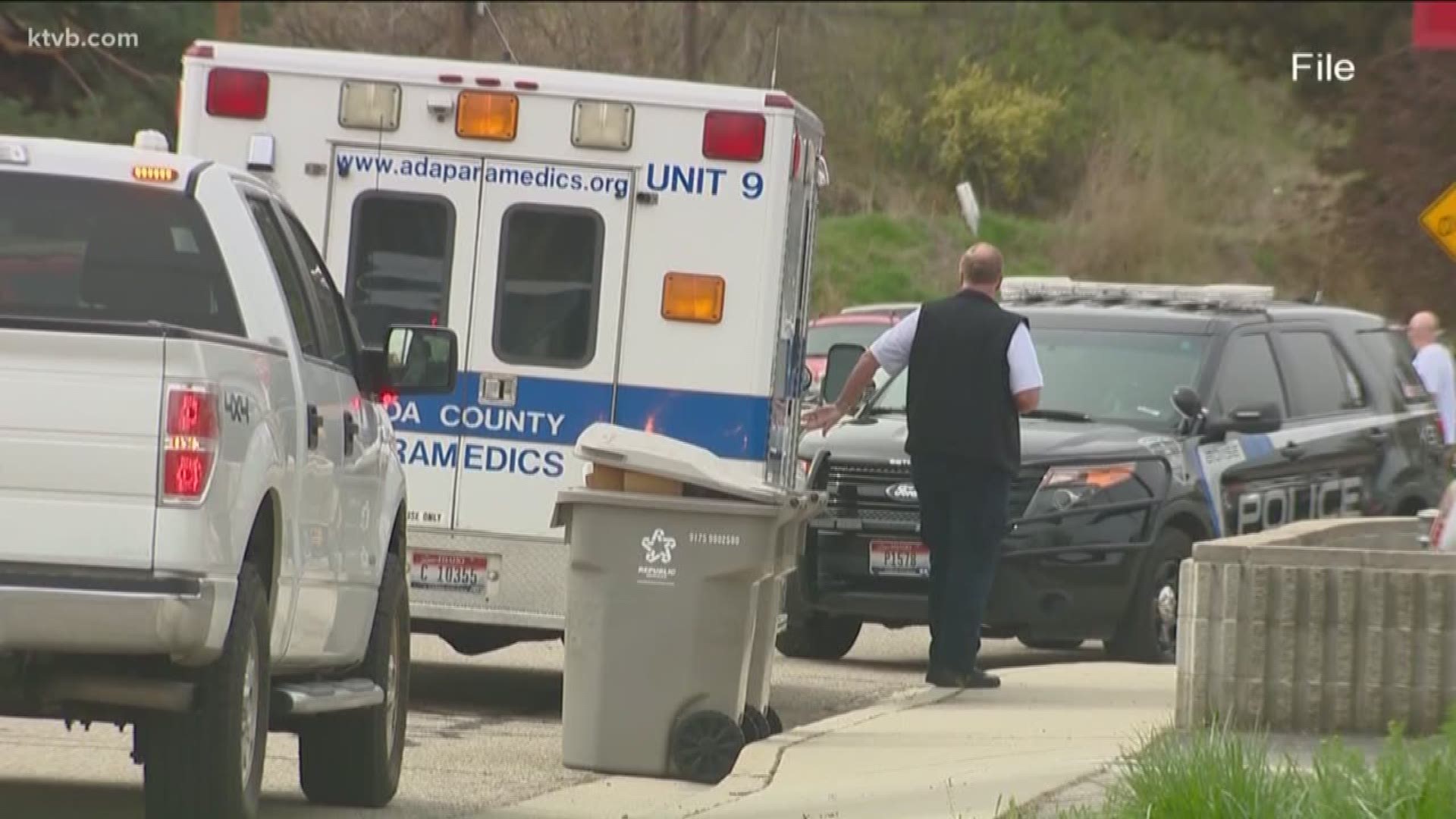ADA COUNTY, Idaho — While the country battles the COVID-19 pandemic, other emergencies don't simply come to a halt.
Even during a pandemic, first responders still have to answer multiple calls for service every day.
Those emergency crews are responsible not only for their own health, but the health of the patients they treat and the families they go home to at night.
That means they are doing all they can to stay healthy and limit exposure within the community.
Like nearly all businesses and organizations, first responders are making adjustments and changes in protocol to stay healthy.
Steve Boyenger, chief of Ada County Paramedics, said its paramedics and EMTs are now always in full PPE, or personal protective equipment.
Early on, Boyenger says full PPE was only worn by paramedics on calls where the patient presented symptoms of COVID-19. Now, they have to assume everyone has the virus so they wear protective gear for every response.
"On every call they respond to, they’re wearing N-95 face masks, eye protection, a gown and gloves, regardless of call type,” Boyenger said. "So people in the community will see our people suited up in that even on a car crash.”
Both Ada County Paramedics and the Boise Fire Department have also increased cleaning and sanitization on all equipment, such as ambulances and fire engines.
And both groups continuously monitor the health of their staff.
“One of the first things we’re doing is when crews come on shift, we’re doing a health screening with them," said Romeo Gervais, acting Boise fire chief.
That means crews are checked for symptoms of COVID-19 and their temperature is taken to check for a possible fever. The same is done when crews go off shift.
Ada County Paramedics have the same procedure, but because many of their staff members work 24 hours straight, they are also checked halfway through their shift.
“We are doing both an on-coming, mid-shift and off-going screening,” Boyenger said.
If fever or any other symptoms are present, that first responder is immediately sent home.
Idaho COVID-19 latest: Latest news | Map of confirmed Idaho cases | Stay-at-home order details | COVID-19 resources | Testing sites | Employers hiring | Essential business list | Closings | School closings | Help nonprofits| Full COVID-19 coverage
The Boise Fire Department is also limiting training. Normally, training exercises are multi-engine and done in large groups. But currently, only necessary training with single engines and small crews is taking place.
Training has also been changed for the 14 recruits now going through the academy.
"We’ve paused the hands-on portion right now and we’re going to a virtual experience for them for right now," Gervais said. "So they’re doing remote training on wildland fires and remote training on fire protection systems. We’re recording videos for them and things like that to keep those 14 recruits on track and get them in our system as soon as we humanly can. Because if this continues to ramp up, which we anticipate it will, those additional members are going to be important to us in the future.”
Besides taking precautions before responding to a call, Boise Fire is also changing how it responds.
“One of the first things we’ve done is we limit first responders to exposure in the sense of we limit how many people go in and make initial contact,” Gervais said.
To help give responding crews more information, dispatchers now ask additional questions regarding COVID-19 symptoms and possible exposure.
"That gives us that little bit of extra information while we’re en route so we can be prepared when we get there," Gervais said.
Something else new for Ada County during the pandemic is two "COVID units," co-staffed by Boise Fire and Ada County Paramedics.
According to Gervais, those units can be sent to treat very low-risk calls that have potential COVID-19 or even flu-like patients. That helps limit exposure to other engine crews and also keeps them available for other day-to-day emergencies.
“Every day is a new challenge where we have to come in and address something different,” Gervais said.
So far, neither Ada County Paramedics or Boise Fire have had to deal with a staffing shortage due to sick or quarantined workers. But that, and many other situations, are something they're preparing for.
“All of our providers are prepared to deal with this, they’re doing an amazing job and we couldn’t be more proud of the folks we’ve got working for us,” Boyenger said.
Boyenger and Gervais both said their staff also takes all necessary procedures upon going home to protect their families from being exposed. And if any family members are sick, that first responder is asked to stay home and self-isolate until it's safe to go back to work.
First responders say the public can help by obeying the stay-at-home order. The less people go out, the less exposure there is and that means fewer patients for emergency responders and healthcare workers.
Another thing, Gervais said, is to make sure to call 911 only in a true emergency. Non-urgent health needs should be directed to your primary care physician or other healthcare providers.
Finally, local fire departments and the Idaho Department of Environmental Quality are also asking people to be mindful of non-essential outdoor burning during this time. Gervais said that would include things like open outdoor fire pits. Extra smoke in the air can further complicate the health of those already dealing with respiratory problems so he asks others to be mindful of that.
“It’s going to take the whole community to make it through this," Gervais said. "I’m confident we will and we’ll be stronger for it in the end.”
Facts not fear: More on coronavirus
See our latest updates in our YouTube playlist:
At KTVB, we’re focusing our news coverage on the facts and not the fear around the virus. To see our full coverage and the latest COVID-19 case numbers, visit our coronavirus section here: www.ktvb.com/coronavirus
Coronavirus resources:
Closures

